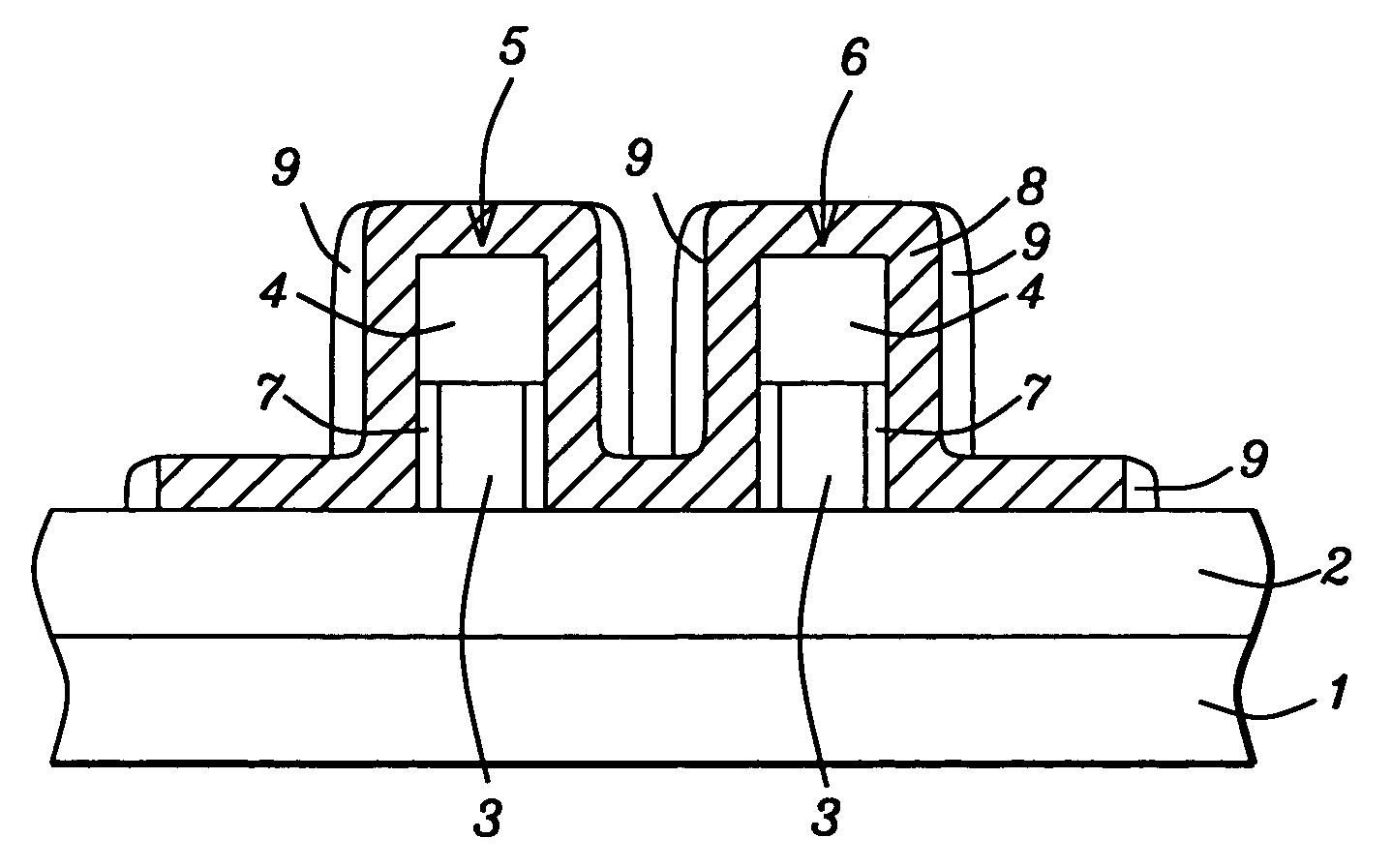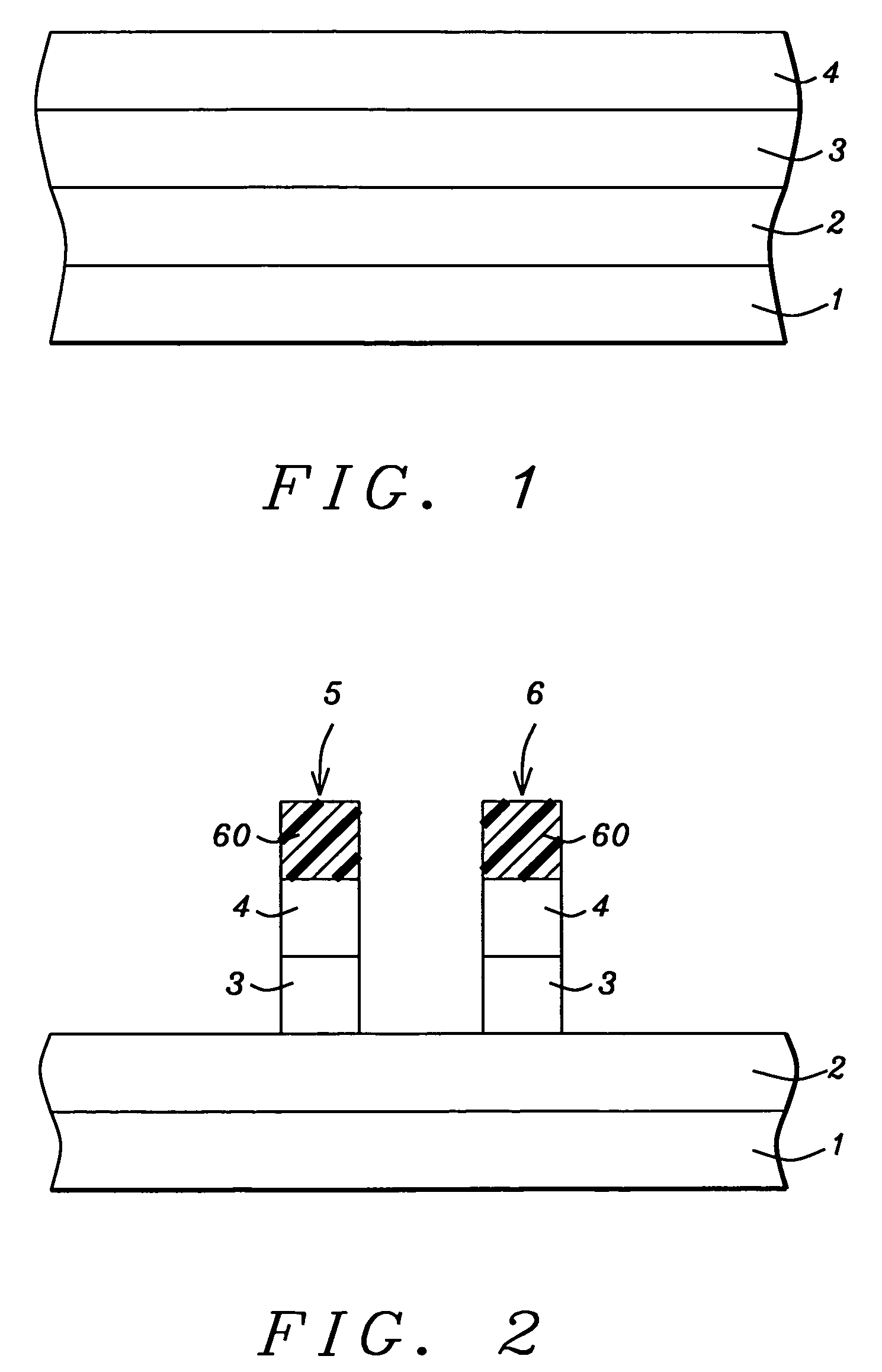Method of forming an N channel and P channel finfet device on the same semiconductor substrate
a technology of finfet and semiconductor substrate, which is applied in the direction of semiconductor devices, electrical equipment, transistors, etc., can solve the problems of difficult to achieve the finfet type device, device, comprised of both nmos and pmos devices, and achieve gate resistance reduction
- Summary
- Abstract
- Description
- Claims
- Application Information
AI Technical Summary
Benefits of technology
Problems solved by technology
Method used
Image
Examples
Embodiment Construction
[0016]The method of forming an NMOS FINFET device, and a PMOS FINFET device, in the same SOI layer, featuring reductions in source / drain and gate resistance, will now be described in detail. Semiconductor substrate 1, comprised of single crystalline silicon with a crystallographic orientation, is used and schematically shown in FIG. 1. Silicon layer 3, the silicon component of an SOI layer, is formed via oxygen implantation into a portion of semiconductor substrate 1, followed by an anneal procedure which results in the formation of insulator layer 2, underlying non-implanted, and non-oxidized silicon layer 3. Insulator layer 2, is comprised of silicon dioxide at a thickness between about 100 to 1000 Angstroms, while SOI layer 3, the remaining top portion of semiconductor substrate 1, overlying insulator layer 2, is maintained at a thickness between about 50 to 5000 Angstroms. If desired the SOI configuration can be obtained via bonding of a first semiconductor substrate to the top...
PUM
 Login to View More
Login to View More Abstract
Description
Claims
Application Information
 Login to View More
Login to View More - R&D
- Intellectual Property
- Life Sciences
- Materials
- Tech Scout
- Unparalleled Data Quality
- Higher Quality Content
- 60% Fewer Hallucinations
Browse by: Latest US Patents, China's latest patents, Technical Efficacy Thesaurus, Application Domain, Technology Topic, Popular Technical Reports.
© 2025 PatSnap. All rights reserved.Legal|Privacy policy|Modern Slavery Act Transparency Statement|Sitemap|About US| Contact US: help@patsnap.com



